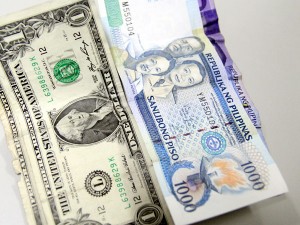Gov’t debt rises to P5.46T; finance execs still upbeat
MANILA, Philippines—The government’s outstanding debt rose to P5.46 trillion in July—5.8 percent higher than the P5.16 trillion recorded in the same month last year, the Bureau of the Treasury reported on Tuesday.
Finance officials said that, although the amount of debt grew, the government was now in a position to better manage its liabilities.
This is because the rate of the economy’s expansion has outpaced the rise in the government’s obligations, they explained.
The officials said that, in funding public expenditures, the government now borrows more from the domestic market than from foreign sources.
Of the amount incurred in July, the bulk of nearly P3.5 billion was secured from the domestic market, while the rest came from foreign lenders and bondholders.
Article continues after this advertisementNational Treasurer Rosalia de Leon earlier explained that the government considered it more prudent to borrow more from local sources because the domestic economy was currently awash in cash. Because of this, government securities are in high demand while interest rates remain low.
Article continues after this advertisementThe amount of debt secured locally was 12.3 percent higher year on year. Foreign obligations, meanwhile, declined by 3.8 percent during the same period.
The outstanding debt of the government has been on the rise since the Asian financial crisis of the late 1990s because its revenue collection continues to fall short of the country’s expenditure requirements.
To plug the budget deficit, the government borrows from the domestic capital market through the sale of treasury bills and bonds.
It also borrows from foreign lenders by selling bonds in the international capital market and securing loans from development institutions, like the World Bank, Asian Development Bank and Japan for International Cooperation Agency.
The Philippine government’s outstanding debt is estimated to be equivalent to around 50 percent of the country’s gross domestic product (GDP).
The debt-to-GDP ratio has been on the decline since it peaked at 74 percent in 2004.
At 50 percent, the Philippine government’s debt-to-GDP ratio is compliant with international standards for debt manageability.
Finance officials said the debt-to-GDP ratio was expected to decline further over the medium term as growth of the economy continued to outpace borrowings.
